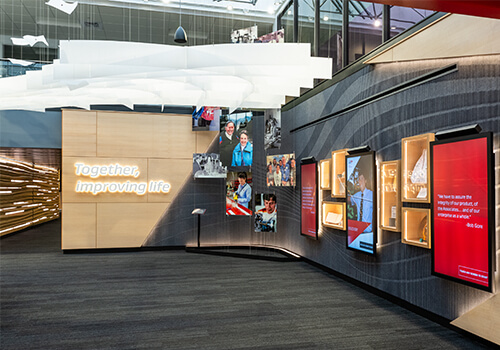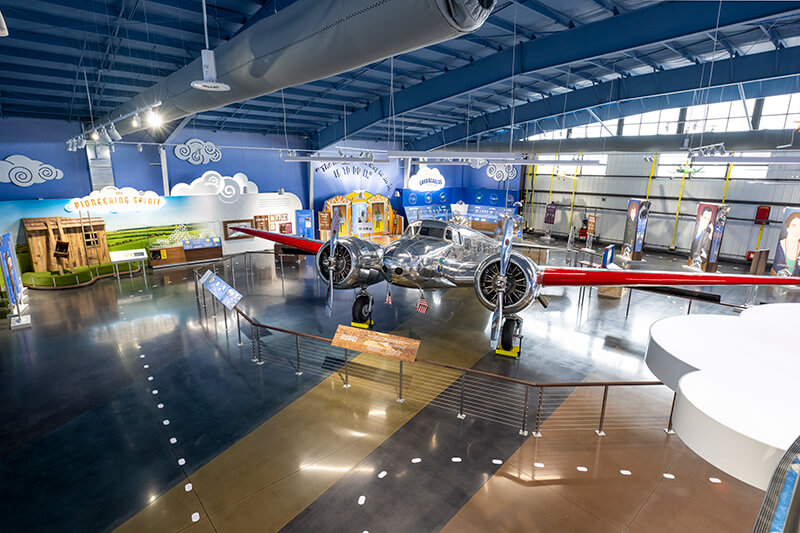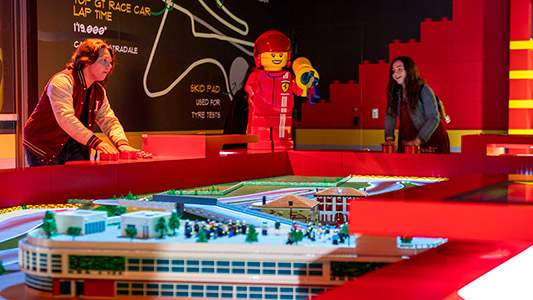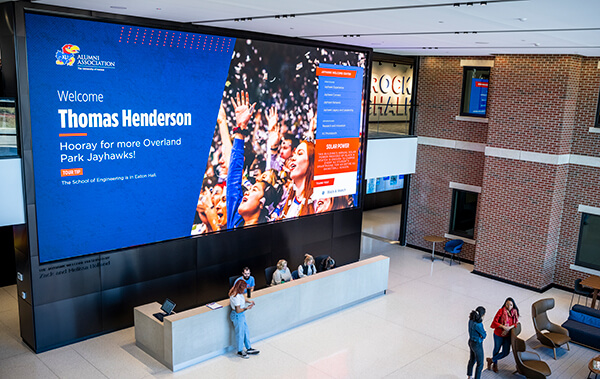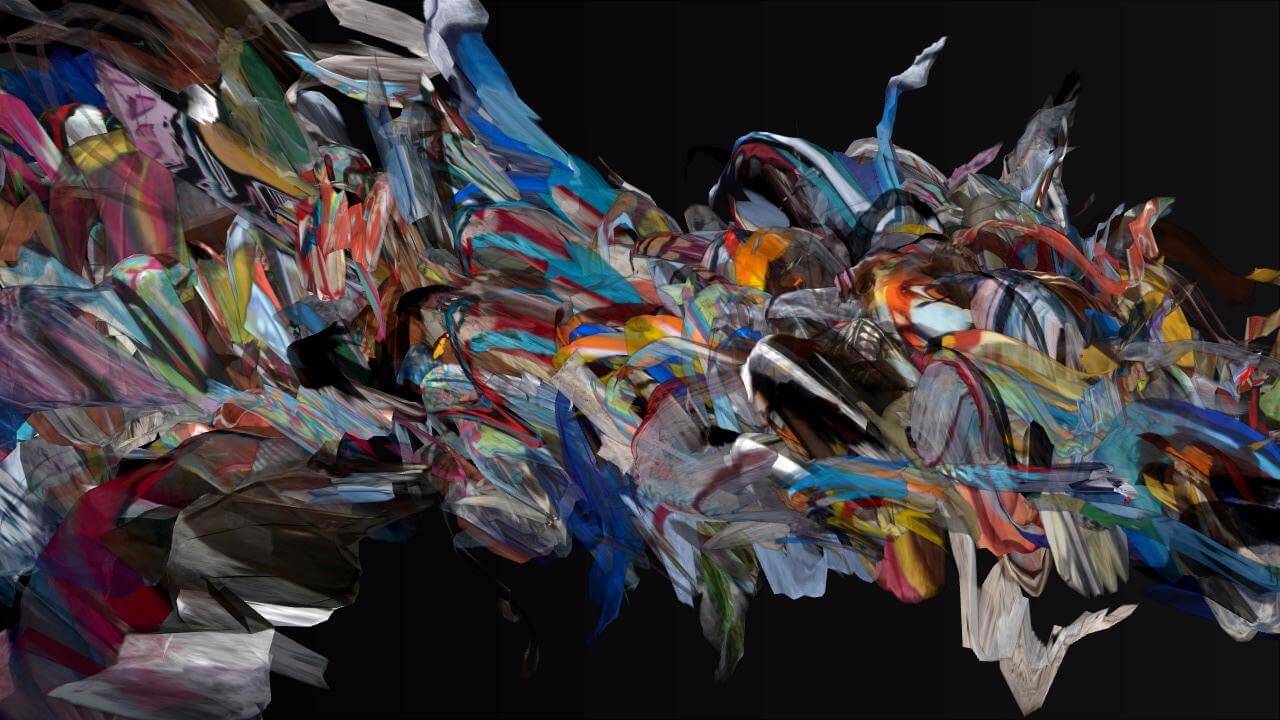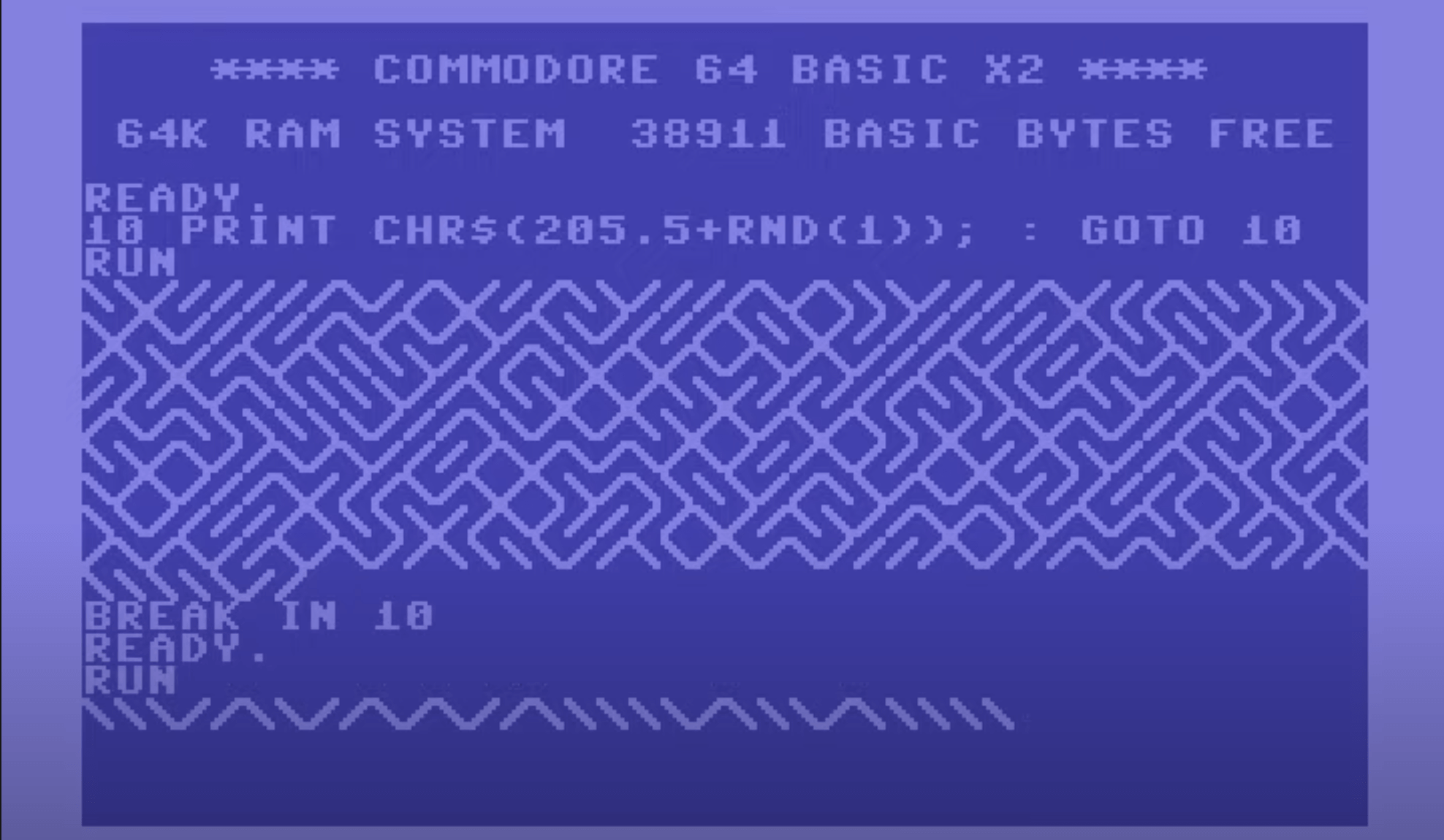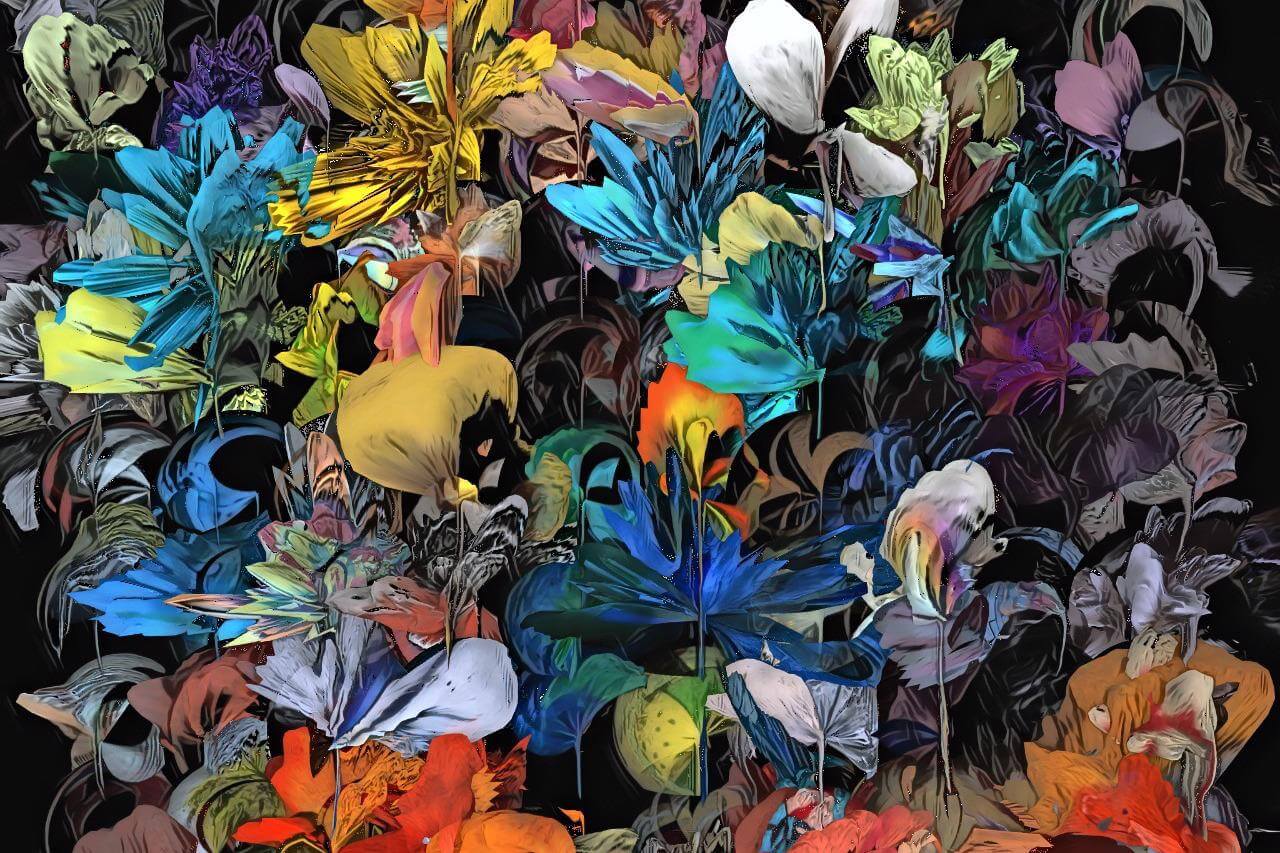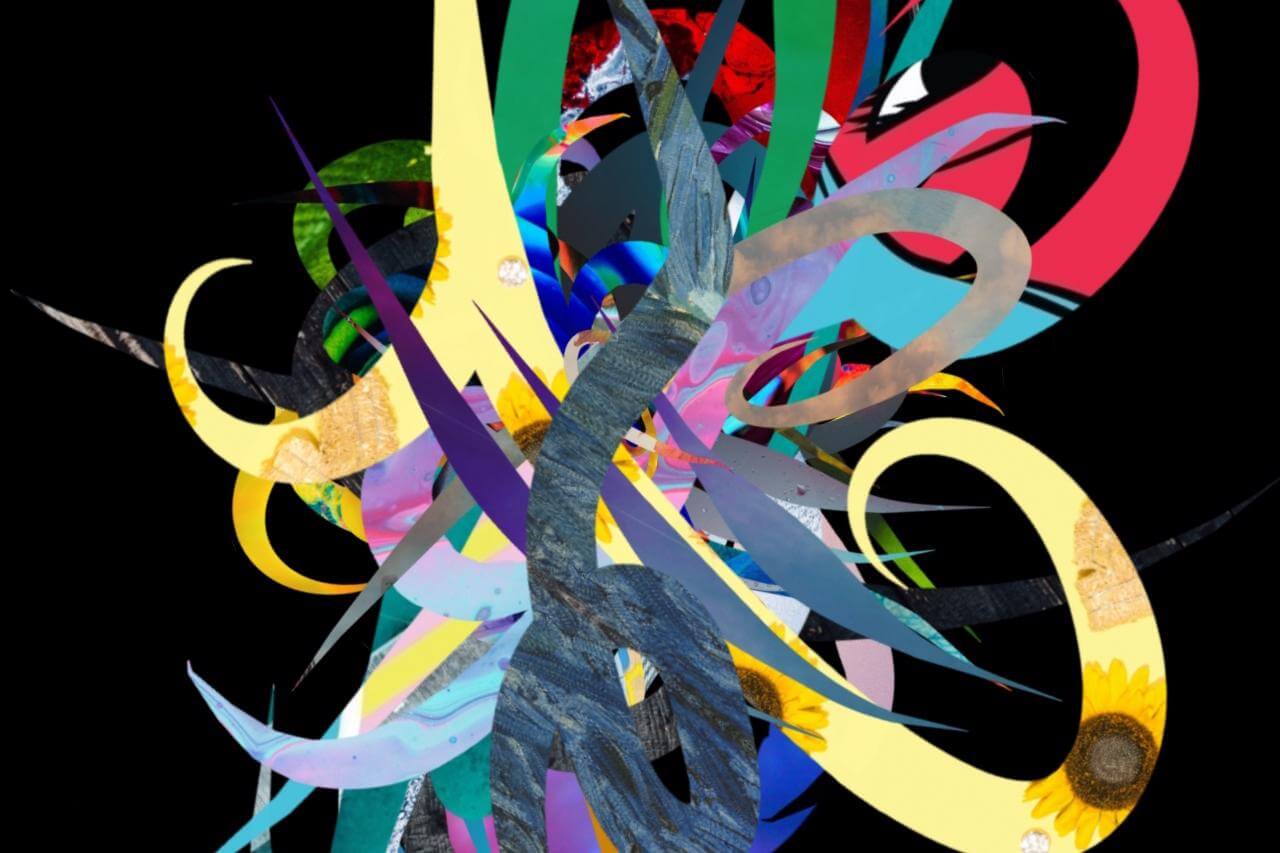Ever since humans first delved into making art, we have been inventing and co-opting tools to help in our art-making process. In the distant past, this artistic inventiveness led to the creation of pigments and paint. And as we follow this thread through to present-day, we see an immense array of tools artists have used to create art. Brushes, cameras, welders, looms — the list goes on.
One Computers are one of the more recent additions to this list. Even in the early days of computing, artists were finding ways to use computers in novel and creative ways.
One of those early works is “10 PRINT” which you can see running on a Commodore 64 in this video. This work is a single line of looping code that, with each loop, prints one of two random characters to the screen, a forward or backward diagonal line. The cumulative effect of this repeating pattern is this lovely maze pattern that emerges.
Works like this began to scratch the surface of what is possible in computer-aided art. There are hundreds of very direct ways to create art with computers, such as modifying photographs in Adobe Photoshop or designing a 3D character in Blender. But there are also a variety of more indirect ways we can use computers to create art. Generative art is the name of one of these processes and I’d like to unpack exactly how it works.
Generative art is a very broad term and if you asked 50 people to define it, you’d likely hear 50 different answers. But let’s put some bounds around this idea so we can better understand it. Generative art is artwork created collaboratively between a human and a computer.
Still with me? Let’s break it down further.
The first step in a generative artwork is writing a program. The human artist writes out instructions and patterns they want the computer to follow. This could be incredibly simple: “Draw 1000 squares.” Or it can be incredibly complex: “Simulate flocking behavior of birds and draw colorful trails where each bird has flown.” But it’s up to the human collaborator on this team to come up with the idea.
Randomness is an important part of this process, strictly followed instructions will always result in identical works. Introducing randomness creates the opportunity for infinite variations on a theme. So the instructions then become something like “Draw 1000 squares at random locations” or “Simulate flocking in a world where gravity changes randomly every second.”
It’s now time for the computer collaborator to jump in. The computer follows the instructions written by the human and goes about executing them. It draws the squares or performs the flocking simulation and presents the results back to the human collaborator.
The human then becomes a curator in the process, choosing what they like and don’t like about what the computer produced. The human can tweak the instructions or seed the program with different data. Then the program is re-run and this collaborative feedback loop continues until our human collaborator is happy with the result.
A wonderful byproduct of this process is that this feedback doesn’t have to stop, in fact, it can continue throughout the life of the artwork. As long as we provide an interface, the program can respond, react and change according to any number of inputs. This allows us to create artworks that can respond to motion, visualize live data or any number of wild ideas.
In part two, I’ll talk through a handful of DI projects that incorporate these techniques. Feel free to check out any of my generative art here.




